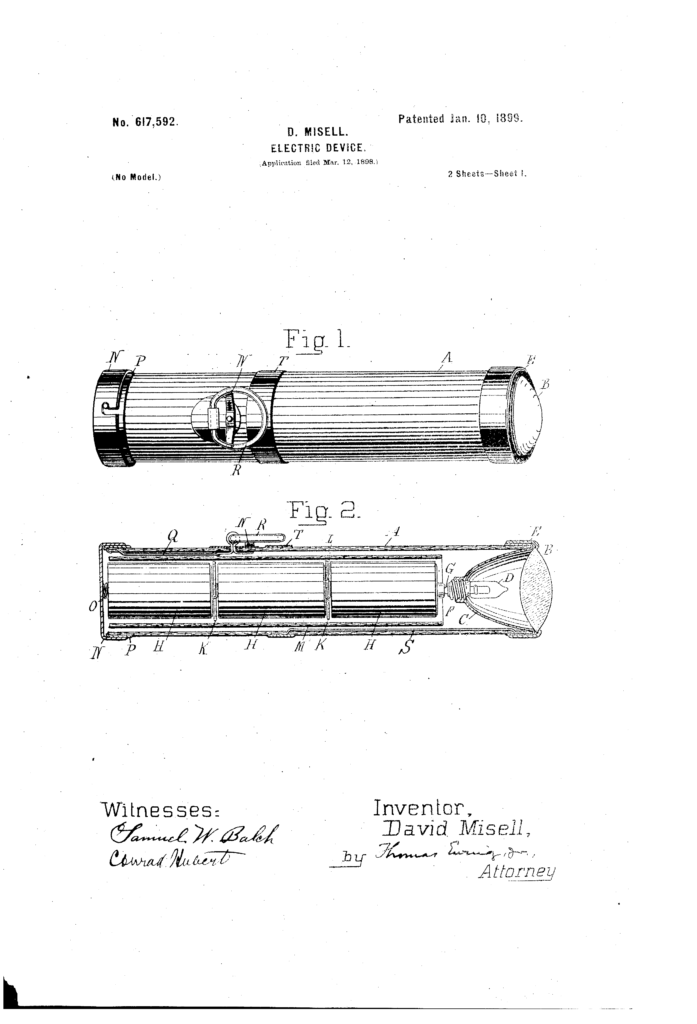The flashlight was invented by David Misell.
Introduction
Have you ever found yourself in a situation where a flashlight was your most valuable tool? From power outages to late-night camping trips, flashlights have become an essential part of our lives. But have you ever wondered who invented this handy device?
Who Invented the Flashlight and When?
The flashlight was invented by David Misell, a British inventor who later moved to the United States. He developed the first practical flashlight and received a patent for it in 1899.
Historical Background
Early Lighting Solutions
Before the invention of the flashlight, people relied on various portable lighting solutions. Torches and lanterns, often fueled by oil or candles, were the primary sources of light. These methods, while useful, had significant limitations, including the risk of fire and the need for a constant fuel supply.
Technological Innovations
The path to the flashlight began with two critical technological advancements: the development of the electric battery and the incandescent bulb.
The Electric Battery
The invention of the electric battery by Alessandro Volta in 1800 provided a portable source of power. Volta’s creation, known as the Voltaic Pile, was the first chemical battery and marked a significant milestone in electrical engineering. This invention paved the way for the development of portable electric devices, including the flashlight.
The Incandescent Bulb
Thomas Edison’s creation of the incandescent bulb in 1879 offered a reliable and bright light source. Edison’s bulb was capable of producing light by heating a filament until it glowed. This innovation was crucial for the development of the flashlight, as it provided a practical means of illumination that could be powered by batteries.
The Inventor: David Misell
Biographical Information
David Misell was a British inventor who later moved to the United States. Little is known about his early life, but his contributions to portable lighting technology are well-documented.
Invention Journey
Initial Inspiration
Misell’s journey to inventing the flashlight began with a fascination for electrical gadgets. He saw the potential for creating a portable light source that could be turned on and off at will.
Collaborations
Misell’s collaboration with Conrad Hubert, an entrepreneur and electrical enthusiast, was crucial in the development and commercialization of the flashlight. Hubert recognized the potential of Misell’s invention and helped refine the design.
Prototyping and Development
The first flashlight prototypes were relatively simple, consisting of a paper tube, a brass reflector, and a light bulb powered by D batteries. Despite their simplicity, these early flashlights were revolutionary in their ability to provide a portable and reliable source of light.
Patent and Commercialization
In 1899, Misell received a patent for his flashlight design. Hubert, with his American Electrical Novelty and Manufacturing Company, which later became Eveready, manufactured and sold the flashlights. The product quickly gained popularity, and the flashlight became a staple in American households.
Flashlight vs. Torch
What Does “Flashlight” Mean?
The term “flashlight” comes from the early design of the device, which produced brief flashes of light rather than a continuous beam. Early batteries were not very powerful, so the light would often flicker or flash, hence the name “flashlight.”
Differences Between Flashlight and Torch
In American English, the term “flashlight” is used to describe a portable handheld electric light. However, in British English and many other parts of the world, the same device is called a “torch.” The term “torch” historically refers to a stick with a flame at one end, used as a light source before the advent of electric lighting. Despite the difference in terminology, both terms describe the same modern device: a portable electric light powered by batteries.
Impact and Legacy
Early Reception
The flashlight was initially marketed as a novelty item, but it quickly proved its practicality. Early adopters included police officers, firemen, and military personnel who needed reliable portable lighting.
Technological Advancements
Over the years, the flashlight underwent numerous improvements. Advances in battery technology, the introduction of LED bulbs, and the development of more durable materials have all contributed to the evolution of the modern flashlight.
Cultural Significance
Today, the flashlight is more than just a tool; it holds significant cultural and practical value. From emergency preparedness kits to everyday household use, the flashlight remains an indispensable part of our lives.
Conclusion
In this article, we’ve explored the invention of the flashlight, from its historical roots in early lighting solutions to the technological innovations that made it possible. We learned about David Misell and his journey to bring the flashlight to market.
The flashlight’s evolution highlights the importance of continuous innovation and adaptation. Its development has not only provided a reliable source of portable light but has also paved the way for numerous other technological advancements.
As we look to the future, one can only imagine how portable lighting technology will continue to evolve. What new innovations will emerge, and how will they shape our daily lives? The story of the flashlight reminds us that even the simplest inventions can have a profound impact on the world.
Additional Sections
Infographics or Images


Patented by David Misell on January 10, 1899, the first portable flashlight.
Quotes from Experts
“The invention of the flashlight marked a significant milestone in portable lighting technology, transforming how we interact with the world after dark.” – Dr. Jane Light, Historian
Related Innovations
The development of the flashlight also spurred innovations in battery technology and portable electronics, influencing a wide range of devices we use today.
